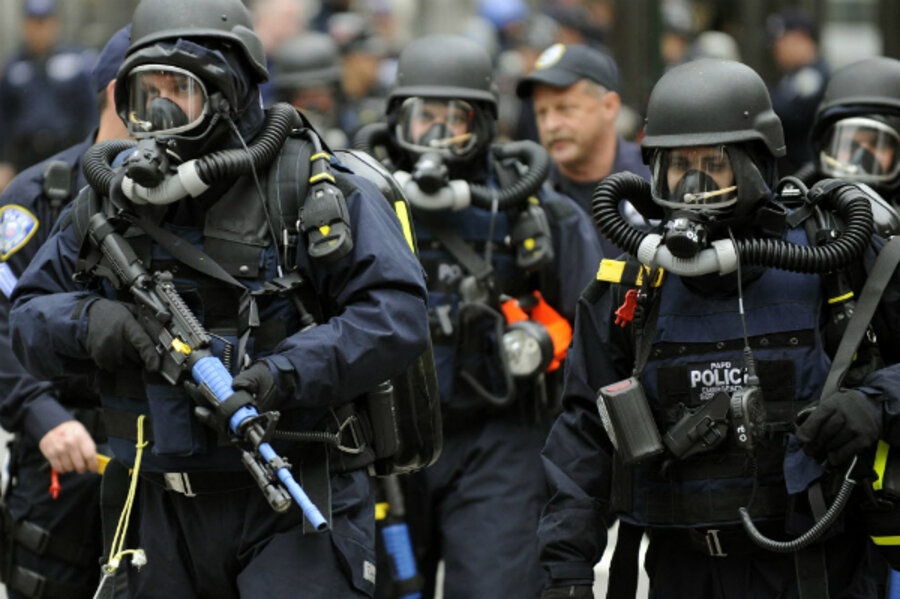Pentagon warns that US faces IED threat at home
Loading...
| Washington
What is the danger that improvised explosive devices – the sorts of roadside bombs routinely used in Afghanistan, for example – could be used on highway overpasses in the United States?
And could these IED’s be used in combination with a cyber attack – a terrorist who might use, say, a cyber-trigger to detonate a roadside bomb?
As the war in Afghanistan winds down, US military officials are wrestling with these questions – and how to take the lessons they have learned overseas and apply them to defense of the homeland.
“It is clear the IED is the primary weapon of choice” for terrorist networks and, as a result, “is one of the enduring operational and domestic security challenges for the foreseeable future,” says Lt. Gen. Michael Barbero, director of the Pentagon’s Joint Improvised Explosive Device Organization. “The domestic IED threat from both homegrown extremists and global threat networks is real and presents a significant security challenge for the United States.”
Since 2007, IED incidents outside of Iraq and Afghanistan have increased to more than 500 per month. The United States is among the five countries who have had the greatest number of IED events since January 2011, Barbero told a House Homeland Security subcommittee this month. This includes more than 10,000 attacks in 112 countries – rounding out the top five are Colombia, Pakistan, India, and Syria – executed by 40 regional and international terrorist networks.
In the US, some of these attempted attacks include the attempted underwear bombing of Christmas 2009, as well as the Times Square car bombing in 2010. There were also ink cartridges packed with explosives aboard two separate cargo planes the same year, a lesser-reported but similarly thwarted event.
“These attempts clearly demonstrate the commitment of these threat networks to continue to employ IEDs against our homeland in traditional as well as new and creative ways,” General Barbero told lawmakers in public testimony before the subcommittee adjourned to a closed session.
Many of these IEDs are made with calcium ammonium nitrate (CAN), the key ingredient in the Oklahoma City bombing that killed 168 in 1995. It has also been a bane to US troops in Afghanistan, who routinely face explosions from roadside bombs made with CAN smuggled in from Pakistan (the material is outlawed in Afghanistan).
Now, US officials are using databases from IED investigations in Iraq and Afghanistan to track potential terrorists in the United States. US military officials say that last year, law enforcement agents were able to arrest two Iraqi nationals on federal terrorism charges in Bowling Green, Ky.
This happened after the FBI used US military biometric information gathered in a joint FBI-Pentagon database to link one of the Iraqis to an unsolved IED attack in Iraq between 2003 and 2006. “This is a textbook example,” Barbero told lawmakers, of how the US military is helping to counter the threat of IED attacks on US soil.
“The IED is the most deadly form of attack on our troops in the war zone,” Rep. Dan Lungren (R) of California, chairman of the House Subcommittee on Cybersecurity, Infrastructure Protection and Security Technologies, told the Daily Beast online. “That has increased over time. Is there any question that those who are dedicated to killing Americans would not exploit vulnerabilities in the United States to use IEDs here?”







